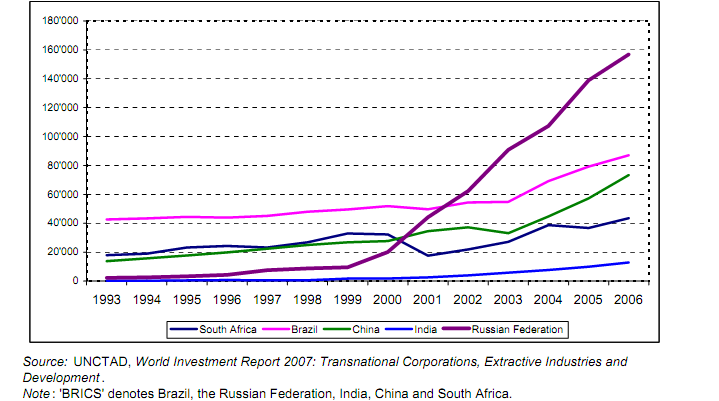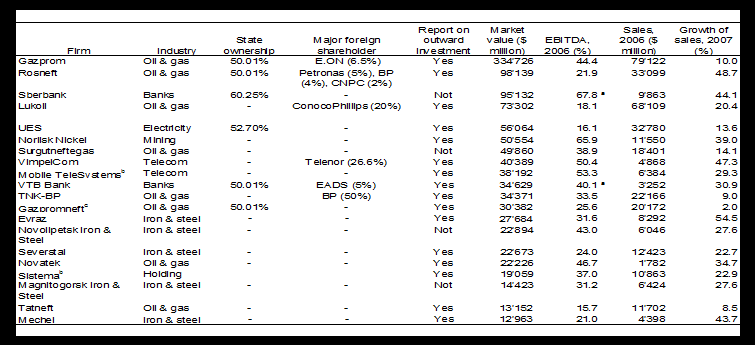Сборник статей ежегодной международной студенческой научно-практической конференции isbn 978-5-7890-0605-4 Ростов-на-Дону
| Вид материала | Сборник статей |
- Сборник статей по материалам Международной научно-практической конференции по страхованию, 1875.83kb.
- Международной научно-практической конференции, 481.91kb.
- Программа XXIV студенческой научно-теоретической конференции 18-23 апреля 2011 г. Ростов-на-Дону,, 1754.34kb.
- Итоги и перспективы энциклопедических исследований сборник статей итоговой научно-практической, 3612.81kb.
- Д. С. Лихачёва и проблемы современного мегаполиса Сборник докладов участников международной, 3272.71kb.
- Сборник научных статей по материалам 2-й международной научно-практической Интернет-конференции, 2229.35kb.
- Ственный институт наука и студенты: новые идеи и решения Сборник материалов viii-й, 5467.94kb.
- Итоги и перспективы энциклопедических исследований сборник статей итоговой научно-практической, 3301.6kb.
- Программа 4-й Международной студенческой научно-технической конференции Конференция, 803.12kb.
- Сборник научных статей и докладов участников Поволжской научно-практической конференции, 4109.46kb.
THE DYNAMICS OF THE OUTWARD INVESTMENT POSITION OF THE RUSSIAN TRANSNATIONAL CORPORATIONS
This article focuses on the dynamics of the outward investment position of the Russian Federation, using balance-of-payments data, as well as the main target regions/countries and sectors of foreign acquisitions of Russian TNCs, based on cross-border merger and acquisition (M&A) data. It is followed by analysis of the Russian TNC universe and their motivations to invest abroad.
Key words: outward foreign direct investment, transnational corporations, Russian TNCs, merger and acquisition, internationalization
During the 1990s, the Russian Federation was a major capital exporting country, with its FDI(Foreign direct investment) outflows often exceeding inflows. At the beginning of transition, most of FDI outflows were of an informal nature; until 1999 the officially registered outward FDI stock hardly surpassed US$10 billion (figure 1). Since 1999 Russian outward FDI stock has expanded rapidly, with its growth rate surpassing those of other emerging markets such as Brazil, India, China and South Africa .
Figure 1. Outward FDI stock of the BRICS countries, 1993–2006
(Billions of US dollars)

Russian outward investment is boosted by rising volumes of cross-border M&As.(merger and acquisition). While M&A purchases by Russian TNCs tripled between 1992–1996 and 1997–2000, and between 1997–2000 and 2001–2004, they soared more than 10 times in the last four years.
Cross-border M&A data are also important sources of information on the patterns of outward FDI from the Russian Federation because they permit to analyse the geographical and industry patterns of the foreign expansion of Russian firms; these details are not available from the FDI data.
As for the geographical distribution of acquisitions abroad, data show that
Russian firms targeted mostly developed country firms, despite the fact that the expansion of Russian TNCs often started in other member countries of the Commonwealth of Independent States (CIS) .
Nevertheless, the highest share of the CIS in M&As (28%) was recorded in 2001–2004. Moreover, only in the last four years were there notable acquisitions by Russian firms in developing countries, mainly in Asia but also in Africa. At the country level, the United Kingdom is the country with the largest M&A purchases from the Russian Federation. In 2001–2004, 41% of purchases took place in the United Kingdom. In 2005–2008, the United Kingdom accounted for 33%. Canada has been another important target country, reflecting the acquisition of LionOre by Norilsk Nickel in 2007.
Table 1. Cross-border M&A puchases by Russian TNCs, by host country/region, 1992–June 2008 (Millions of US dollars)

As for the sectoral composition of M&A purchases, most of the acquisitions of Russian firms were made in the primary sector (Table 2). It accounted on average for 60% of investments in the last three sub-periods.
Table 2. Cross-border M&A puchases by Russian TNCs,
by host sector/industry, 1992–June 2008
(Millions of US dollars)

The share of the primary sector was low in 1992–1996 (9%) but it increased very quickly since then, especially that of petroleum and gas, but also that of other mining. Manufacturing was the main sector where purchases took place in early 1990s; however, by 1997–2001, its share fell to 8%, although it picked up again later on, reaching 24% in 2005–2008. A different pattern was followed by investments of Russian firms in the services sector. Their share in M&A purchases was very low in 1992–1996, but then it increased to 34% in 2001–2004. In the last four years, its share was 16%. Within services, telecommunications was by far the most important industry.
2. The universe of Russian TNCs
In the Russian Federation, capital exports are driven by large industrial conglomerates, especially in natural-resource-based industries.
Table 3. The 20 largest Russian firms, ranked by market capitalization, end 2007

The largest, and probably most important, ones are in the oil and gas industry, with Gazprom, and Lukoil as examples of full-fledged international players, while Novatek, Rosneft, Tatneft and TNK-BP have more limited foreign activities.
A second group is in metal processing, including Severstal, UC Rusal, Norilsk Nickel and Evraz.
The third group is in telecommunications, with Sistema (including its affiliate Mobile TeleSystems) and VimpelCom being both important TNCs.
Lukoil is the largest Russian TNCs by foreign assets, ranked second among the world’s privately-owned oil companies by proved hydrocarbon reserves.
84% of its sales take place abroad. The company has been active in around 25 foreign oil and gas exploration and production in the neighbouring CIS countries, Middles East, Africa and Latin America.
In metallurgy, Severstal is the largest steel producer of the Russian Federation
and the 3rd largest Russian TNCs by foreign assets. It became supplier to leading American auto manufacturers thanks to the acquisitions of the fifth largest steel maker of the United States Rouge Industries, as well as the construction of the greenfield plant SeverCorr in 2007.
Norilsk Nickel is a world leader in the production of several strategic metals, in particular, palladium, platinum, nickel, cobalt and copper. The company’s international network includes production enterprises and trading firms spanning from nine countries on five continents.
Evraz Group – another iron and steel TNCs with large foreign assets – is a vertically integrated metallurgical major. Its first European acquisitions in 2005 in Italy and Czech Republic allowed the company to follow a profit seeking strategy in these important markets.
In telecommunications, Sistema, a holding company owning electronics, insurance, banking, real estate, retail, and media companies, derives most of its revenues from its telecommunications branch, which itself controls more than 50 operators in fixed and mobile telephone and other communication services.
The conclusion
The past several years have witnessed the rapid growth of Russian FDI outflows. Such strong internationalization of Russian companies astonishes many experts.
Nevertheless I suppose the Russian investment expansion has not reached its peak. Many new Russian TNCs can appear in next few years. In fact, scientists underestimate the whole economic potential of Russia because the deep industrial decline during the Russian transformation of the 1990s. However new Russian firms have competitive advantages and their owners want to be global players. Furthermore, modern Russian TNCs make up a very heterogeneous group.
Literature
- United Nations Conference on Trade and Development WORLD INVESTMENT
- Kalman Kalotay
- Alexei V. Kuznetsov
- i/pei/pub
Давидян Лола Ваноевна
Rostov State Economic University, Russia
LAS PERSPECTIVAS DEL DESARROLLO DE LA INDUSTRIA DEL TURISMO EN LA REGIÓN DEL DON
This work is dedicated to the tourism in Russia, namely to the tourism in Rostov region, and the ways of its development . The work deals with some most interesting and unique places , worth to be seen, with the current condition and ways of organizing a tours to them. We also mention some types of recreation, which could be offered to persons visiting Rostov and Rostov Region, and tell about touristic routes already existing in the region.
Key words: Rostov region, boating tourism, reserve, eco-tourism, Cossacks, Ethnographic Museum, Azov, Tanais, Sholokhov, Don.
Como se sabe, Rusia es el país más grande del mundo, tiene 9 zonas horarias, limita con 18 países, incluye en sí 83 regiones, los pueblos de Rusia hablan más de 100 idiomas y dialectos, en el país se encuentran 35 parques nacionales y 84 vedados, es el único país con las cuatro zonas climáticas.
-Es fácil imaginar la cantidad de los lugares que vale la pena ver. Pero, por desgracia, el turismo no esta desarrollado en todas las partes y regiones, porque es muy difícil alcanzar a algunos lugares debido a las enormes distancias entre ellos
- Nos interesa la nuestra zona donde vivimos, o la región del Don, como la llaman, es un de los más pintorescos y ricos regiones del país, así que voy a contar sobre las perspectivas del turismo aquí y los destinos turísticos ya existentes en la región que vale la pena visitar.
- La región de Rostov tiene buenas perspectivas en el desarrollo de turismo fluvial , que les gusta a muchos turistas.
- También se puede desarrollar y tal dirección como el eco-turismo.
- Otro tipo de la posible forma del turismo es el turismo rural y etnográfico.
En la región de Rostov viven los cosacos del Don, son un grupo especial étnico de la población de Rusia. En este contexto, parece oportuno incluir el programa de la estancia de los turistas en sus aldeas.
- También se puede visitar varios museos etnográficos, tales como:
Razdorsky Museo Etnográfico, Starocherkasskaya Museo Histórico y el vedado.
-Entre las lugares de interes en Rostov-on-Don Rostov se distingue la Catedral de la Natividad de la Santísima Virgen. La Catedral fue construida en 1885 por el famoso arquitecto ruso, K.A Tono - el autor de la Catedral de Cristo Salvador, el Gran Palacio del Kremlin y la Armería en Moscú.
-En Azov, La fortaleza de Azov. Por esta fortaleza durante casi 100 años fue la guerra ruso-turca. Y sólo en 1774 fue anexionada finalmente a Rusia.
-En Tanais, El Museo Histórico- Arqueológico y el vedado "Tanais". Aquí se encuentran las ruinas de una antigua ciudad fundada a principios del siglo III a.c. por Griegos. En el territorio se ubican las excavaciónes y la reconstrucción de puentes y edificios de la ciudad antigua.
- Way to Getting Wired
- et/africa/nota
Камау Энн Харриет
Rostov State Medical University, Kenya
Reception of higher education by students from the African countries
The article highlights the problem of adaptation of African students at the university, describes some aspects of adaptation (social, psychological and cultural). the author identifies the different nature of the difficulties faced by African students in Russia and reviews the Kenyan education system
Key words: foreign students, process of adaptation, socio-cultural environment, language difficulty, customs, training, educational system
Kenya, officially the Republic of Kenya, is a country in East Africa. Lying along the Indian Ocean to its southeast and to the equator, it is bordered by Somalia to the northeast, Ethiopia to the north, Uganda to the west and Tanzania to the South.
Like many young people studying abroad, Russia's foreign students must contend with homesickness and poverty. Few can afford even an occasional trip home. But the difficulties they face are compounded in a country like Russia, such as orientation, language, customs such as constant control of process of their adaptation is important which includes set of aspects, most important of which are: the adaptation to new socio-cultural environment, educational system, language of dialogue, adaptation to culture of the new country, etc. They pass through a set of social-cultural distinctions and difficulties, such as valuable orientation, language, customs etc. After arrival, the foreign students typically have financial misunderstandings due to other currency usage, which cause stress. Many students complain of loss of appetite, weariness, slackness, sleeplessness, bad mood. But on the other hand, many students have noted the huge help of native people, i.e. students of their home country, who live in Moscow, St. Petersburg or any other city already.
Each foreign student goes through language difficulty after arrival. The students are put through inconvenient situation when they have a hard time explaining the service they want; the problems arise at purchase of items in a store. Only through gestures, separate phrases in English or Russian, the foreign students can communicate with the Russian people. The distinction in gestures and the enunciation of phrases cause laughter, surprise, and at times carry indecent character that very much afflicts and confuses the foreign students.
The adaptation of the foreign student to the new environment should be flexible. The students consider certain level of base preparation, level of Russian knowledge, individual ability to training, feature of national mentality.
One of the important aspects of adaptation of the students to training is the understanding of a new system of formation and its acceptance. The educational systems of Kenya and Russia differ on some items. One of the important psychological aspects is that the students do not address to the teacher by their first name but first name and a patronymic of the teacher.
Study of Russian does not cause much difficulty and is generally provided at a very high level. The main preparation of the foreign students is the fast and effective mastering of Russian. The better the language is learned, the more effectively adaptation will occur; the faster foreign students cease to hesitate to address the requests and questions in Russian.
The foreign students hardly experience misunderstanding, conflict on the part of the teachers, as they said idealist "accelerator" of adaptation is the creation of an atmosphere " of a kind house, where each student - foreigner " would find itself".
The foreign students with interest in learning Russian and its people, customs, life, and attitude should visit museums, exhibitions, concerts, drama theatre, meeting and evening of international friendship with the students of high schools and colleges. This promotes adaptation of the foreign students. Having overcome the significant period of process of adaptation, there are other sights they can begin to appreciate. I consider that the part of the given problems can be resolved with the creation of a psychological service for the foreign students coming to study in Russia.
Lots of students go to Russia with the idea that they'll spend the year eating cabbage and potatoes and drinking vodka. Well, the vodka bit is often true. Apart from the inevitable cabbage and potatoes, however, there are some foods I learned that one can try. Like Bliny with Smetana (pancakes with sour cream). These are also delicious with herring, condensed milk, honey, jam, caviar or just about anything.
Pel'meni with Smetana (meat dumplings with sour cream) Pickled cucumbers and mushrooms: you know you've been in Russia too long when you start craving these! Pickled cucumbers and mushrooms: you know you've been in Russia too long when you start craving these! Soups such as borshch (beetroot soup) Kholodets (meat in jelly) just to mention but a few.
I guess just like many others, am not exclusive when it comes to dreading the harsh weather in winter. It is always cold and almost an impossible situation to adapt however long one can stay in Russia. The snow is definitely a perfect surprise for all of us who see it for the first time but with time you realize how bad the surprise is when you are totally frozen!
However difficult it is to find part time jobs in Russia, some of the students have been able to get work as barmen, waiters or cooks' helpers and at some fast food stalls. There are few who work at nightclubs and discos. Of course, there also exists a possibility of working as a cleaner (in office or a private house), sometimes as a maid in a hotel (that may require some qualification), as a babysitter (also requires qualification and recommendations from previous employers), a loader or a house builder (this jobs are in high demand all the year round). Foreign students do not have job criteria, and the possibility for working is not very well defined in the law books, but basically it is not legal for foreigners to work, while being a student.
Unlike other different parts of the world including Kenya, I must confess that Russian universities do not have such traditions as "ragging" or "flaying" unlike most of the educational institutions in India and some western countries. Russian students respect the presence of a foreigner in their group or just ignore them, in this case: the choice is yours, you be friends with them or you don't.
Yes, Russian education is cheap and the Russian lifestyle is still not of a high standard as of the European countries but since the country is going through a very progressive economical change, the inflation problem is as same as anywhere in the world.
The usual yearly inflation is between 7% and 20%! The cost of living is also rapidly increasing, but Russia still is one of the cheapest among the European countries. Keep in mind that education fees and living expenses in large cities can differ from that in smaller towns. You can also try to find some job for extra pocket money.
And lastly I guess this is the most feared topics for any new foreigner in Russia. In the past few years there have been many incidents in St. Petersburg and Moscow, in which foreign students have been beaten up by the so called "Skin Heads". The torturing fact is that these hooligans have a legal and active political party; the mayor of Moscow has banned any form of demonstration from members of this organization. This is the problem not only for foreigners, but for locals themselves - they can be beaten as easily as any foreigner, if a hooligan didn't like the appearance.
Though the problem has been continuing for some years, it still reoccurs everywhere once in a while. Many say that these incidents have been ignored while others say that it has been eradicated totally. But I have concluded that these kinds of incidents can be avoided, if the student follows some basic social rules: Control yourself on different provocations; cut on late night activities that force you to commute back home alone and there is nothing better than being in a good company of friends when around the city.
KENYAN EDUCATIONAL SYSTEM:
After completion of 12 years of primary and secondary school, graduates have a variety of choices. If they performed well, they can go to a public college based on their financial standing and scholarship availability. Only the top performers have this option. The second choice is to attend a private college, which costs more and has fewer scholarships. The third choice is to go to a vocational school or a teacher training institution, or to join the job market.
Teacher training colleges offer a three-year program for science teachers and a two-year program for liberal arts. The primary colleges are Kenya Science Teachers College (for science teachers only) and Kenyatta and Nairobi Universities (mostly for liberal arts teacher training). All programs at these institutions offer a secondary school teacher's diploma. Training for primary teachers is handled by other agencies under the Kenya Institute of Education. Though the need for science teachers is very high, the requirements to enter such a training institution make them very selective and competitive, which make this choice a difficult one. The other teaching choice is to join a two-year liberal arts teacher training college that offers a teaching diploma in liberal arts. A secondary school graduate can also get a teaching job as an untrained teacher (UQT) that offers an opportunity to teach while pursuing training for certification. This option has been made available through continued education programs at the universities in order to meet the high demand for teachers.
There are several middle-level colleges, both public and private that offer national and international diploma awards in a wide field of professions. These are mainly located in the larger towns. There are five public universities, which mainly admit KCSE (Kenya Certificate of Secondary Education) students. In addition, there are eight private universities that mainly offer business, humanities, and other arts courses.
In my own research, I have come to learn about the Russian Higher Education system.
Higher education is under the jurisdiction of the Ministry of Education of the Russian Federation, which is responsible for the accreditation and licensing of institutes of higher education and for developing and maintaining State Educational Standards. There are three levels of higher education: 1) incomplete higher education (2 years at least); 2) basic higher education (4 years) leading to the Bakalavr's degree, the first university level degree; 3) postgraduate higher education (total number of years of post-secondary education: 5-6 years or more). Institutes of higher education are authorized to award the Magistr's degree after 2 years of study or Specialist's Diploma after 1 year following upon the Bakalavr's degree (e.g. lawyer, engineer). There are two levels of doctoral degrees: Kandidat Nauk degree (the first level) and Doktor Nauk degree (the second, highest level). The following higher education reforms are under way: 1) diversification of higher education; 2) humanization; 3) decentralization of management, university autonomy; 4) creation of a non-public sector of higher education. There are 609 public Institutes of higher education and 206 accredited non-State Institutes of higher education in Russia; the Ministry of Education finances 315 public Institutes of higher education. The rest are financed by other Ministries or local authorities. There are about 3000 non-university level educational institutions - technikum, uchilische, and college.
This differs with the Kenyan system and in many other African foreign countries as well as some western countries. Where upon successful completion of high education, one is obliged to do government service for a year then further on out of will, for a Masters degree and thereafter a PhD degree.
Literature
